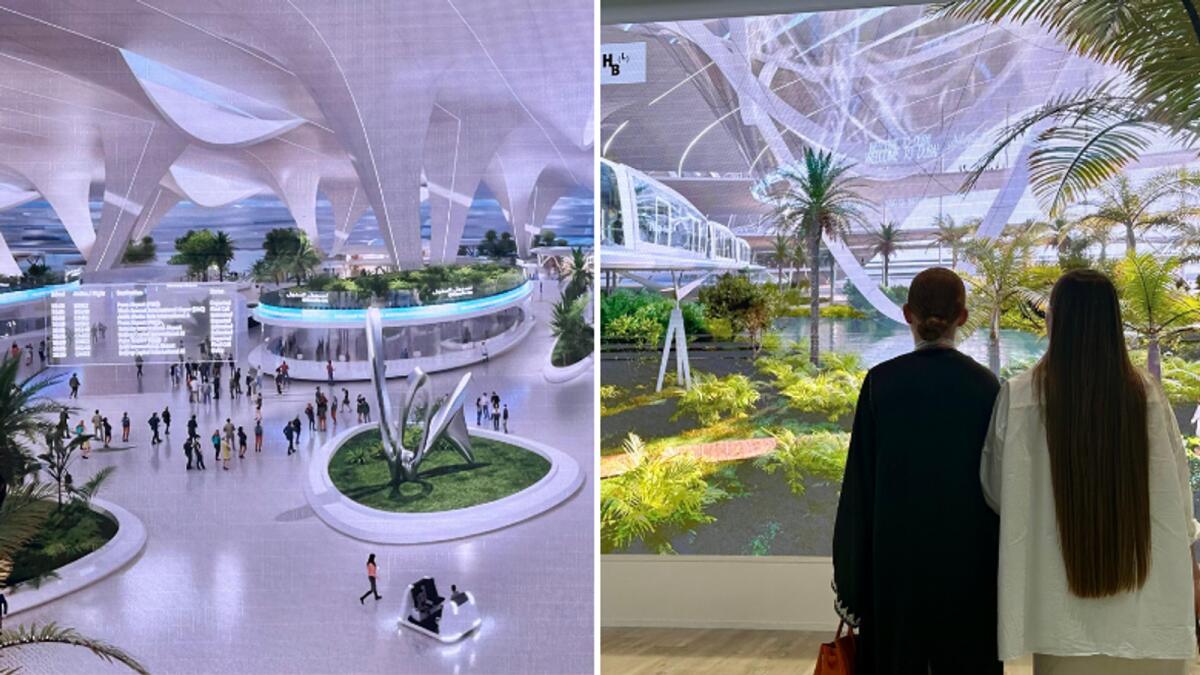Al Maktoum International Airport (DWC) is set to become a city within a city once complete, offering its own transport system, mini-forests, green zones, entertainment hub, and various other amenities such as food, beverage, and retail options. The initial design of the new passenger terminal was revealed by Sheikh Mohammed bin Rashid Al Maktoum in a tweet, with the Dubai Aviation Engineering Projects (DAEP) giving visitors at the 23rd Airport Show a more detailed preview of the world’s largest airport would look like.
The airport will feature an elevated rail or automated people mover (APM) system that will transport passengers through an indoor tropical forest between terminals. Giant LED screens projecting various landscapes and marine habitats will enhance the passenger experience. DWC is designed to prioritize passenger comfort, recreation, and mobility at the highest level, according to DAEP’s two-and-a-half-minute video presentation.
Well-connected to the rest of Dubai and the UAE, DWC will feature high-speed rail (Etihad Rail), a new Metro line, air taxi services, and autonomous vehicles. Travellers will be able to check-in their luggage at hotels, city desks, or even from home before arriving at the airport. Multi-level highways will lead to the new airport, where passengers will be greeted by the world’s largest sun canopy at the curbside drop off zone.
With a focus on sustainability, DWC will offer a vast green zone within the terminal, representing Dubai’s zero-carbon ambition. The terminal will feature large LED screens welcoming passengers with various designs and an indoor aquarium projection. Lined with trees and vast green zones, the terminal will also include an indoor tropical garden for relaxation.
Boasting 400 aircraft gates and five parallel runways within a total area of 70 square kilometres, DWC will provide spacious areas for shops, restaurants, entertainment, and relaxation. First and business class lounges will be set at the upper level, with boarding gates lined along piers for smooth access to aircraft through multiple boarding bridges. The airport will also feature automated face recognition technology to streamline the departure process.
Baggage processing at DWC will be handled through an underground network of galleries and batch centres, capable of processing up to 30,000 bags per hour. Stringent security measures and advanced screening techniques will be implemented, with automated guided vehicles facilitating baggage delivery to aircraft stands. Automated bots and trackable systems will ensure predictable baggage collection and wayfinding for passengers.
With five parallel runways and advanced aircraft guiding systems, DWC will accommodate code F aircraft such as B747-800 and A-380 aircraft, allowing for four simultaneous parallel aircraft approaches. The airport’s operations will be sustainable, relying on clean energy sources like photovoltaic solar panels and implementing water reduction strategies. The estimated cost for the construction of the new passenger terminal is Dh128 billion, with DWC expected to process nearly 260 million passengers and 12 million tonnes of cargo annually. DAEP aims to meet growing passenger demands ahead of projections and establish Dubai as the aviation capital of the world.









